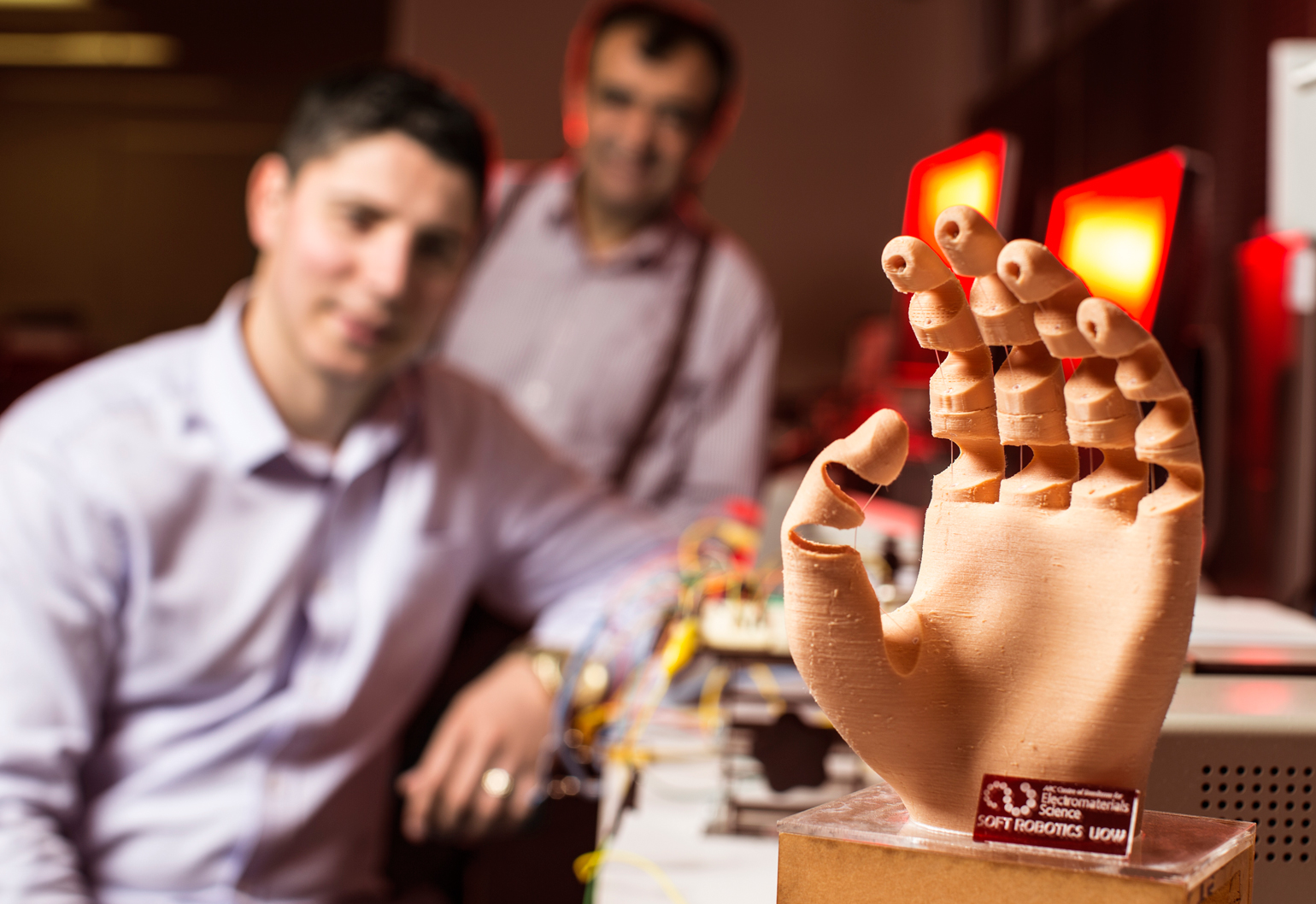The challenge of powering a prosthetic hand without making it heavy or bulky might just have been solved.
Researchers from Deakin University and CSIRO are aiming to develop safe and reliable batteries for a soft robotic prosthetic hand created at the University of Wollongong.
This prototype hand combines new, intelligent materials with 3D printing techniques and responds to neural commands like a real limb, allowing the user to make lifelike movements.
The CSIRO’s Battery Technology Research and Innovation Hub (BatTRI-Hub), based at Deakin, has developed a lithium metal device that is capable of powering one finger of the hand and are now working through the simultaneous challenges of devising a uniquely shaped battery that is powerful enough to run the whole hand and also incorporates next-generation materials.
“Our researchers have carried out extensive work using a particular class of materials called ionic liquids, which are a pure salt with a chemical composition that allows them to be liquid at room temperature,” said BatTRI-Hub Research Fellow Dr Robert Kerr.
“What’s great about these materials is they are non-volatile and really difficult to ignite, unlike the lithium ion cell used in current battery technology – which makes them a safer alternative.”
He said the challenge in using ionic liquids is to achieve the same level of performance as a normal lithium ion cell.
“Moving into the beyond lithium ion space, the goal is to increase the charge capacity of the battery by using high capacity electrodes. In our approach to using lithium metal, we know that controlling the surface of the lithium metal, or the solid/electrolyte interphase, is critical,” he said.
“It actually comes down to the choice of electrolyte used in the cell and the way it reacts with the lithium metal electrode. To build on the stability of ionic liquids we can incorporate them into solid electrolyte systems to form a mechanical barrier.”
They have developed a small pouch cell with the components layered, rather than rolled up into a cylinder like a normal battery.
It can power the robotic finger, but adding multiple cells starts to make the hand bulky and inflexible.
“One of the issues we’re exploring is how to create conformable batteries that we can tailor to the shape of the hand or arm,” said Kerr.
“We also need to consider how the battery is attached to the limb and how to make it easily accessible for recharging.”



